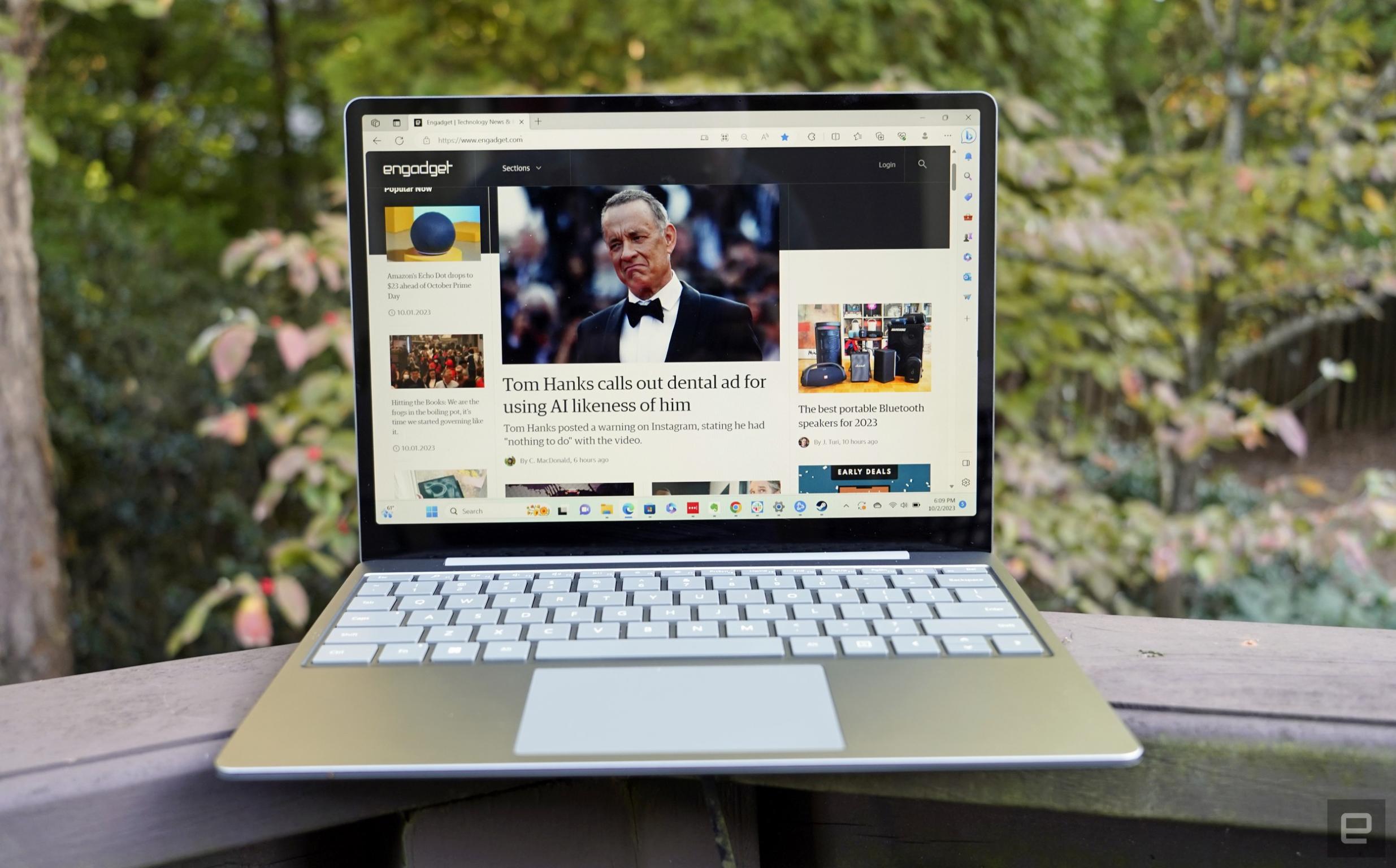When the Surface Laptop Go debuted three years ago, it seemed like Microsoft pushed itself to make the cheapest possible notebook without sacrificing that Surface flair. The result was a $549 computer with specs so anemic I'd never recommend it to anyone. But, if you spent a bit more, you could upgrade it to a compelling (and compact) PC for students and less demanding users. Now, with the Surface Laptop Go 3, Microsoft has given up on trying to deliver a super cheap PC. But the result is a computer that's far more appealing.
Gallery: Surface Laptop Go 3 | 12 Photos
Gallery: Surface Laptop Go 3 | 12 Photos
Starting at $799, the Surface Laptop Go 3 has been upgraded with Intel's 12th-gen Core i5 CPU, 8GB of RAM and a 256GB SSD. Bump it up to $999, though, and you get 16GB of RAM — a first for the Laptop Go line. While the last two models could make for decent secondary machines, perhaps paired together with a powerful desktop, the Laptop Go 3 could conceivably be your primary PC thanks to that additional memory.
Microsoft Surface Laptop Go 3
Pros
- Noticeably faster than previous Laptop Go models
- Excellent keyboard and trackpad
- Build quality is close to premium
- Wonderfully compact
Cons
- Sub-1080p screen
- Could use more ports
- No MicroSD card slot
Sure, I'm sad to see Microsoft give up on the dream of a near-$500 Surface. But the original model was equipped with just 4GB of RAM and 128GB of sluggish eMMC storage – and nobody deserves to be subjected to such a torturously slow experience. The Surface Laptop Go 3 is more akin to Apple's long-lost 12-inch MacBook, a wonderfully small machine that was just powerful enough to get some work done.
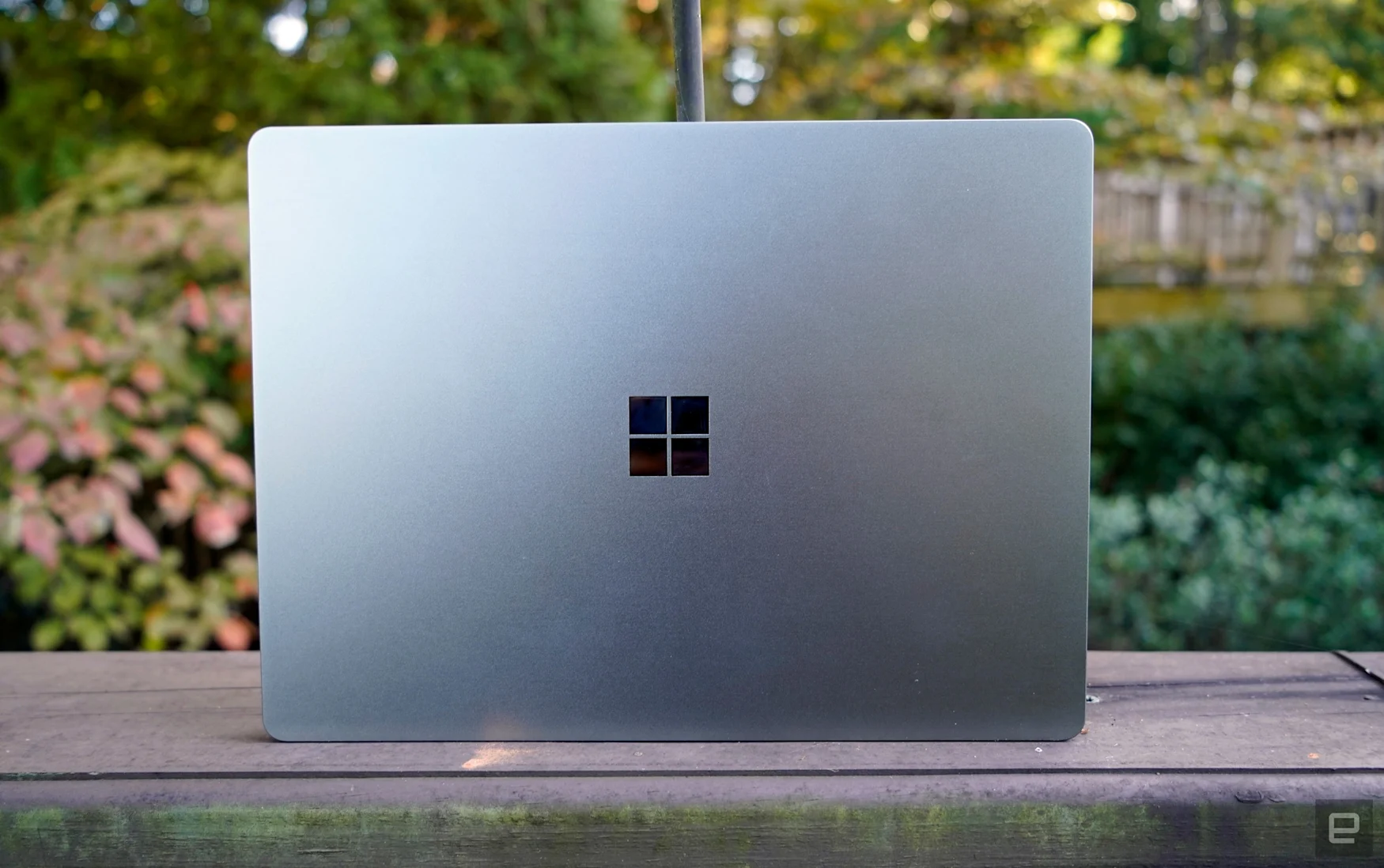
The Laptop Go 3 doesn't look or feel as expensive as that all-metal Apple machine, but it's almost there. It features an aluminum top lid and keyboard deck, along with a smooth plastic bottom. The Laptop Go 3 also weighs a mere 2.5 pounds — a half-pound heavier than the 12-inch MacBook. But that’s a bit lighter than Apple's slimmest notebook today, the 2.7-pound M2 MacBook Air. The Laptop Go line has always felt more akin to an over-sized tablet than a typical ultraportable, and that remains true this year. Few other notebooks slip as nimbly into my messenger bag.
So how did Microsoft make such a compact PC? Mostly, by building around a small 12.4-inch screen, which remains both a blessing and curse for the Laptop Go 3. On the bright side, Microsoft managed to scale down its Pixelsense technology to deliver a display that's both rich with color and bright enough for outdoor use. But unfortunately, the company is still relying on a strange sub-1080p resolution (1,536 x 1,024) to keep costs down.
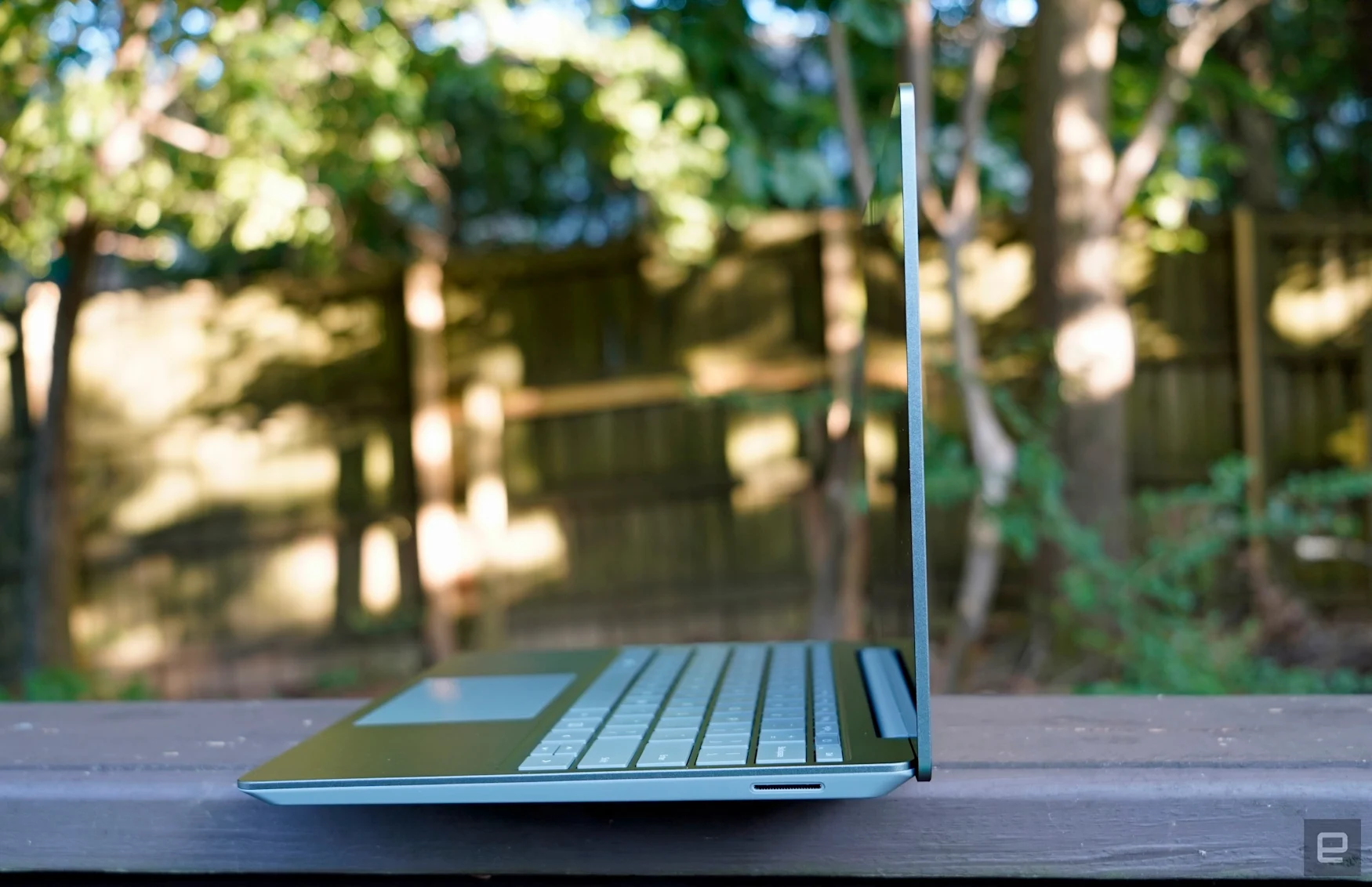
That means if you lean in close, you can easily see pixelated text and images. Though, you may not notice that loss in sharpness in normal use. It just annoys me that even the Surface Go 4, Microsoft's slower and cheaper tablet, has a 1080p screen. The Laptop Go 3 also retains the 3:2 aspect ratio of its predecessors, which makes it taller than a typical widescreen monitor and better-suited for web browsers and productivity apps.
Despite my issues with its screen, the Surface Laptop Go 3 is still an impressive PC for the price. We reviewed the $999 model with 16GB of RAM, and it felt noticeably snappier when it came to launching applications, switching windows and doing basic work than the previous two models. I'm typically juggling dozens of browser tabs, Evernote (yes, I know I need to move on), Slack, Spotify and image editing apps, and the Laptop Go 3 had no trouble keeping up with me.
Laptop | PCMark 10 | Geekbench 5 (single core/multi-core) | 3DMark Wildlife Extreme |
Surface Laptop Go 3 | 4,785 | 1,430/6,094 | 2,810 |
Surface Laptop Go 2 | 4,213 | 1,349/3,764 | 2,799 |
Surface Laptop Go | 2,122 | 1,135/3,486 | N/A |
I'd also attribute its speed bump to Intel's 12th-gen Core i5 CPU, which features 10 cores (2 performance, 8 efficient), a healthy step up from last gen's quad-core 11th-gen chip. While the Laptop Go 3 only scored slightly higher in the PCMark 10 benchmark, it faired much better in the Geekbench 5 multicore test. And based on my own testing, I can't deny that the real-world performance felt more lively. While it's not a machine I'd recommend to anyone doing tons of intensive image editing, the Laptop Go 3 still handled a few batch editing tasks (like resizing and watermarking) without showing any signs of slowdown.
That chip upgrade doesn't make the Surface Laptop Go 3 much of a gaming machine — I hit around 40 fps while playing Halo Infinite in 720p with low settings — but I was still impressed by how it handled Xbox cloud streaming. During its crowded launch event, I was able to wirelessly stream Need for Speed Unbound smoothly, without any weird connectivity hiccups. And I had an even better experience playing a few hours of Lies of P at home over my Wi-Fi 6 router – consider that a solid stress test of the Laptop Go 3's networking hardware.
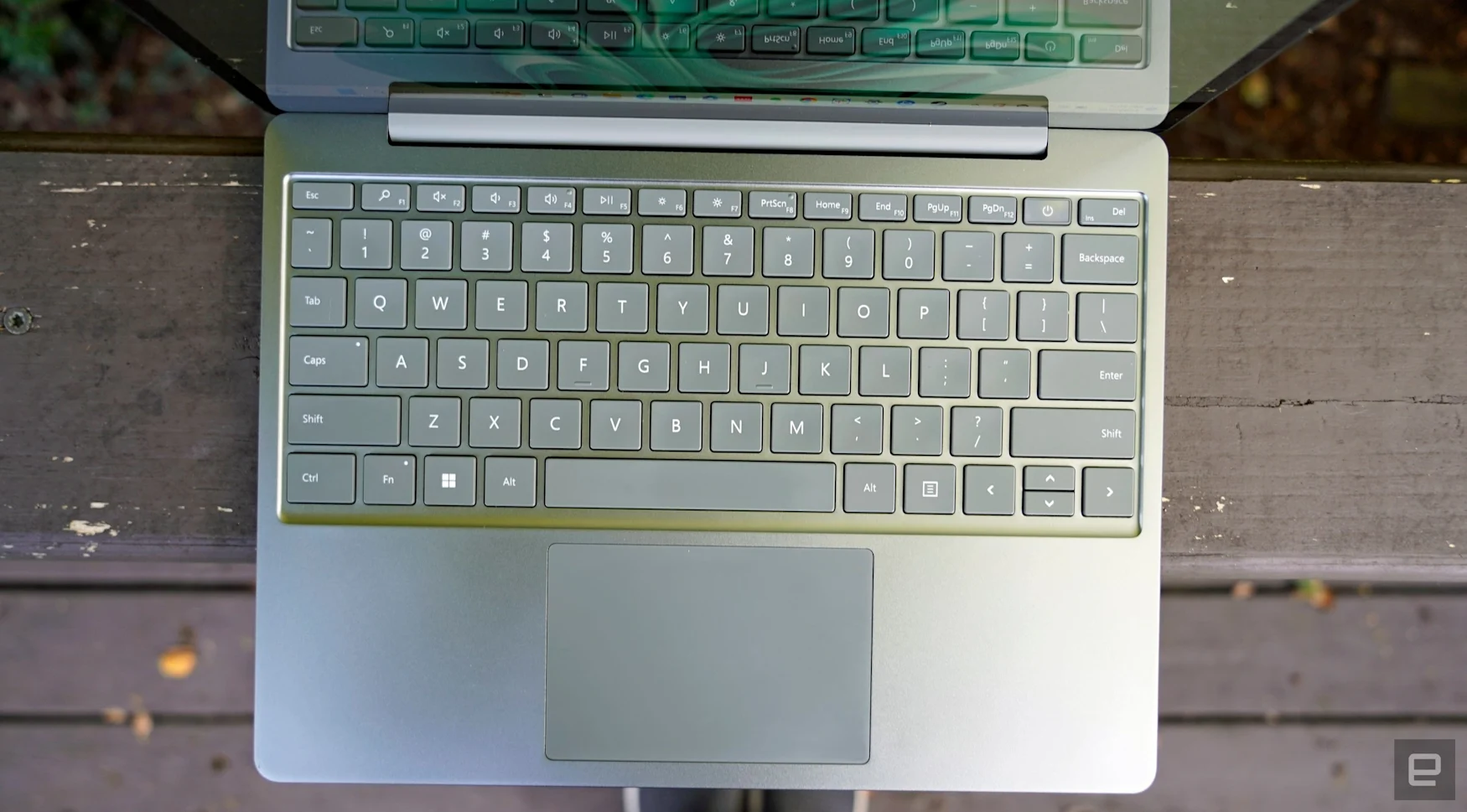
Thankfully, Microsoft didn't touch the best part of the Laptop Go line: Its excellent keyboard. Its keys are still wonderfully responsive and deep, making them well-suited to my furious typing sessions. And while its trackpad isn't as large as other notebooks, it's perfectly fine for web browsing and productivity work. Battery life remains solid as well: It lasted 9 hours and 10 minutes in PCMark 1. That’s well below Microsoft’s estimate of 15 hours, but it’s similar to other recent ultraportables, like the ASUS ZenBook S 13.
Microsoft could make the Laptop Go 3 more useful by adding more connectivity: It still only has one USB Type A connection, a USB-C port, a headphone jack and a Surface charge port. A few more USB connections would make it far more versatile (but at least it has more than the 12-inch MacBook, which only had one USB-C port and a 3.5mm headphone jack). At the very least, it would be nice to have a microSD card slot for storing media.
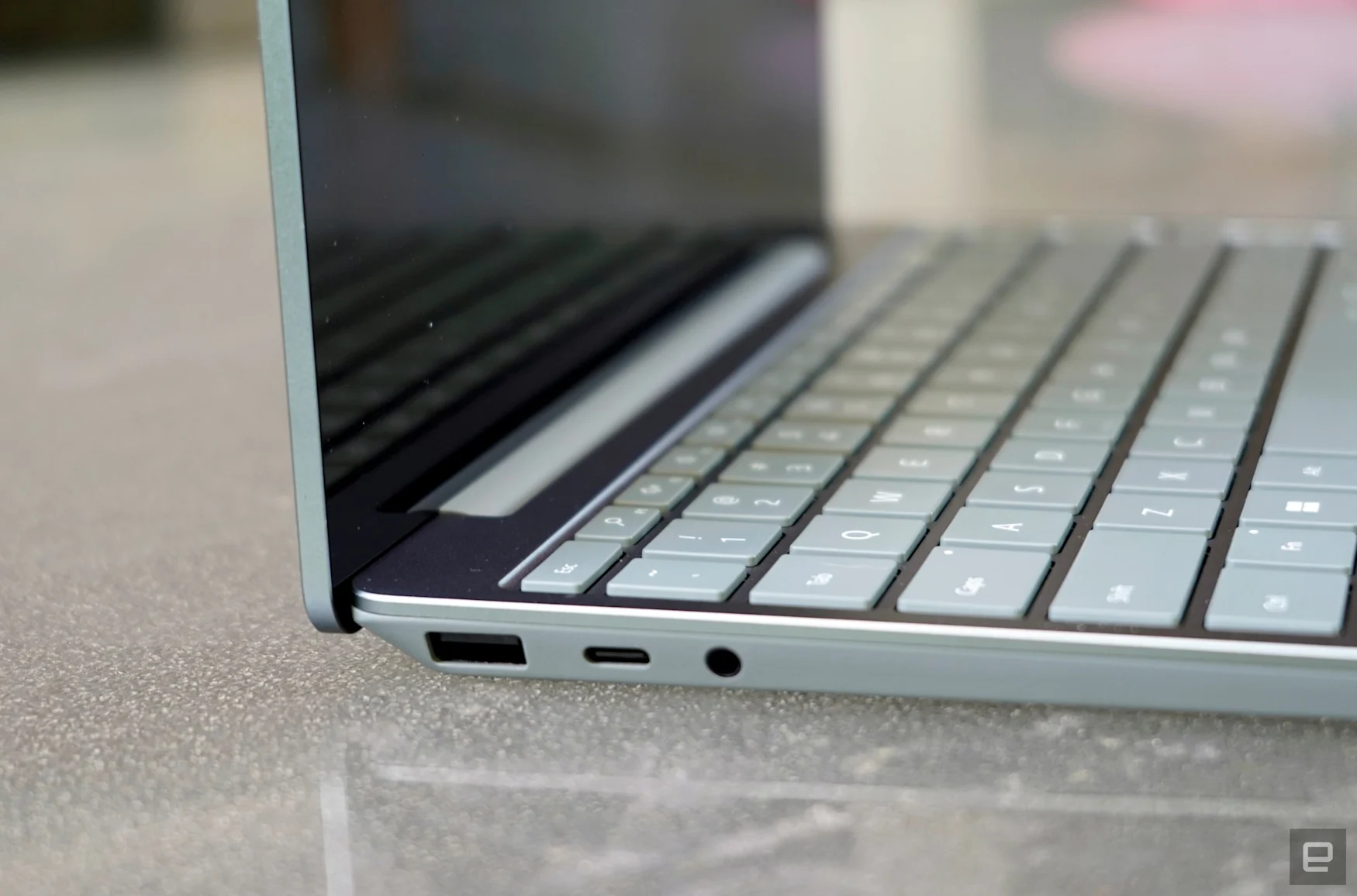
With a $799 starting price, the Surface Laptop Go 3 is firmly int mid-range laptop territory. The $999 model with 16GB of RAM could even be considered a premium product, especially since you can still snag the M1 MacBook Air for the same price. In terms of raw power, Apple's machine is clearly the winner, but it's also a bit heavier at 2.8 pounds. When it comes to compact Windows competition, the Surface Pro 9 also starts at $999 with 8GB of RAM. That machine offers a larger 13-inch PixelSense screen and weighs just 1.9 pounds.
Given that there aren't many 12-inch Windows PCs around, the Surface Laptop Go 3 certainly stands out. And now, thanks to a faster processor and the option of 16GB of RAM, it's more than just a basic notebook. Almost by accident, Microsoft has crafted one of the most compelling and compact mid-range laptops around. Anyone looking for a new ultraportable won't be disappointed — just don't squint too hard at that screen.
